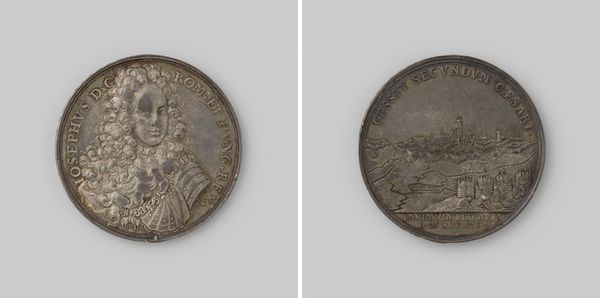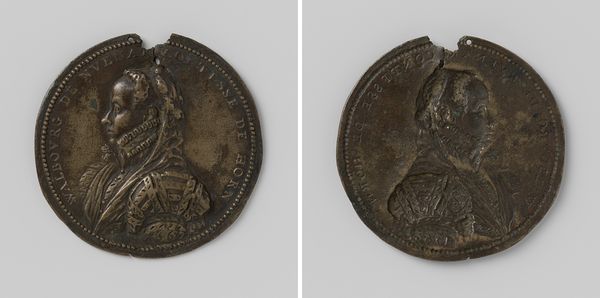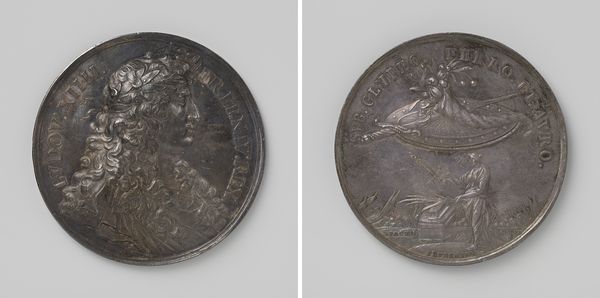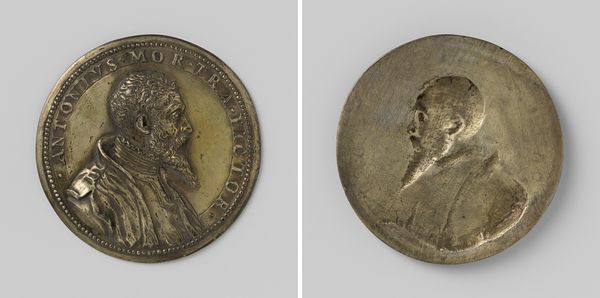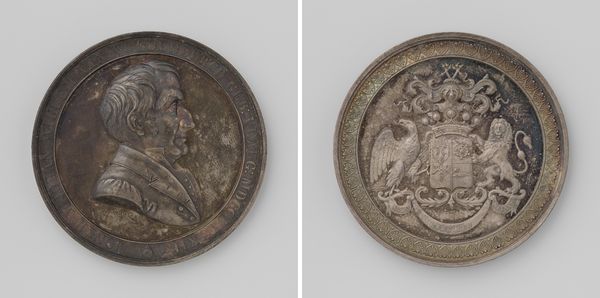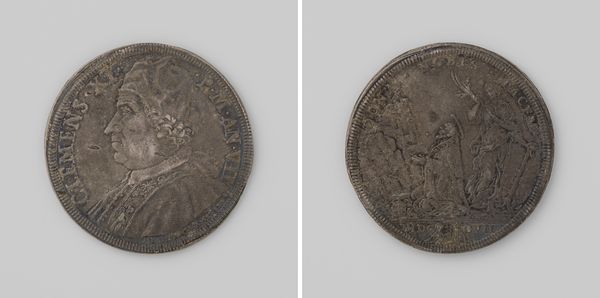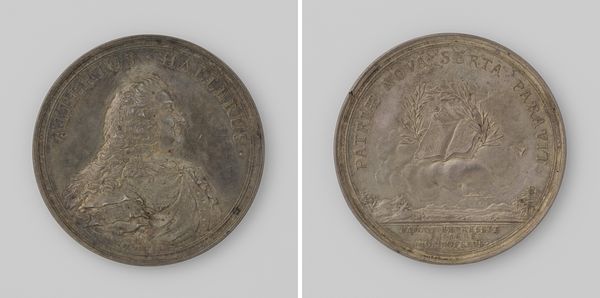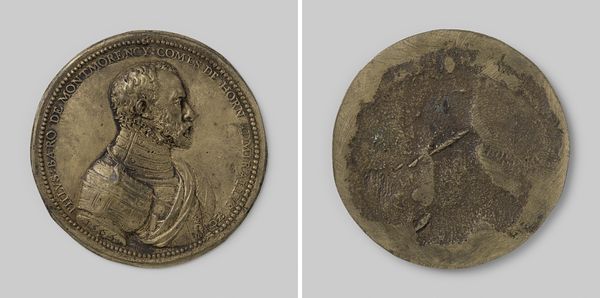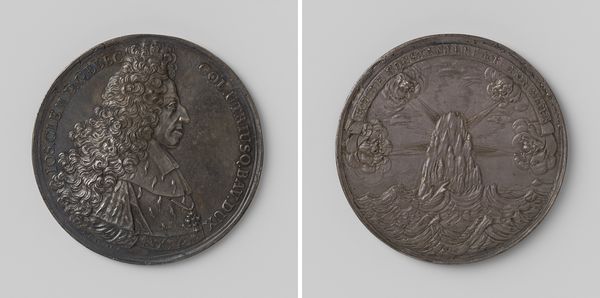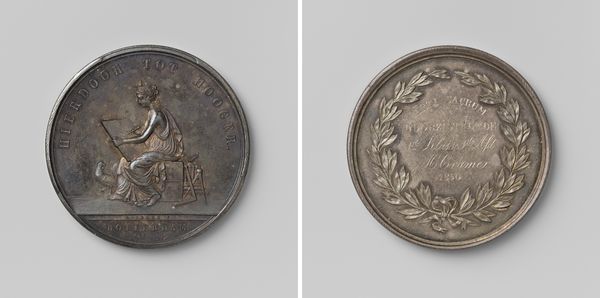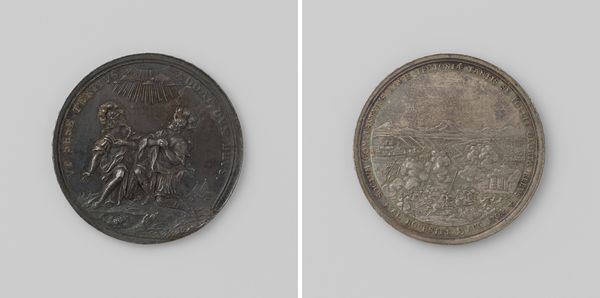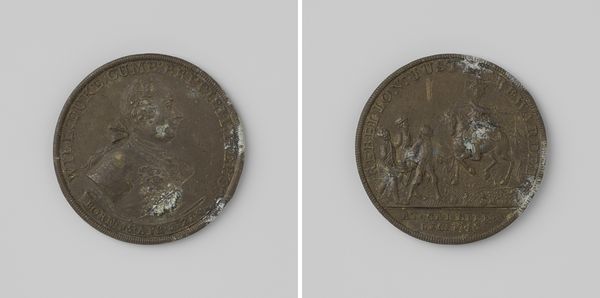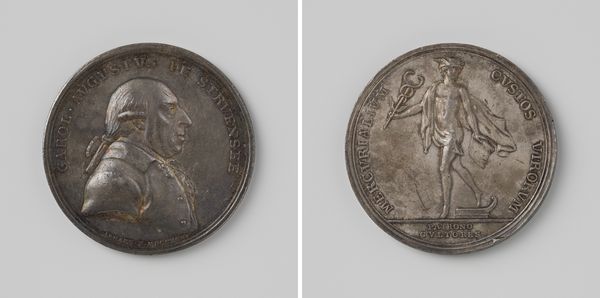
metal, relief, bronze, sculpture
#
portrait
#
metal
#
sculpture
#
relief
#
bronze
#
mannerism
#
11_renaissance
#
sculpture
Dimensions: diameter 7.2 cm, weight 167.51 gr
Copyright: Rijks Museum: Open Domain
Curator: This piece, crafted in 1558 by Leone Leoni, is a bronze relief titled "Verkiezing van Ferdinand tot Duits keizer"—"The Election of Ferdinand as Holy Roman Emperor." What are your initial impressions? Editor: Well, right off, I'm thinking about touch, weight, and how this bronze itself ages. It has an almost primal tactility. And there’s a rougher side here. See that roughly textured bronze work on the reverse with what seems to be an allegorical river god, reclining in a way that feels… surprisingly unceremonious? Curator: I concur. Its duality presents a rather compelling tension. Note the Mannerist affectations present throughout, though particularly striking in Ferdinand's portrayal. Consider, for instance, how his profile embodies a conscious play of surface and depth. Observe the high relief capturing every ornate detail of his armor. Semiotically, it suggests the idealized ruler, rendered with striking artifice. Editor: And those artifices are deliberate—part and parcel of constructing power. Bronze in the 16th century wasn't just "bronze." Its casting was intensely laborious and required skill that made it a valuable and exclusive medium. A political tool really. Curator: Precisely. Observe the use of Latin script encircling both sides, framing and thereby amplifying the medal's message, effectively disseminating its intended propaganda. Leoni presents a clear dialectic: Ferdinand versus the "primitive," perhaps to suggest order overcoming chaos, ruler overcoming raw nature. Editor: The very process—the heating, hammering, and intricate mold-making—demanded collective labor. The final patinas weren't merely aesthetic choices; they are records of hands and workshops now lost to us. We're dealing with a powerful medium used to amplify specific ideological narratives that continue even to influence how materials become cultural markers. Curator: Indeed. Viewing the whole, its strength derives from a self-conscious performance of artistry and material; yet simultaneously acknowledges a certain lack inherent in all such efforts—the ever-present potential of form, forever failing fully to contain what is always in excess. Editor: And with that potential always sits the material cost and labor involved. It reminds me that everything, even imperial imagery, leaves a material trace. Curator: It appears we both find a narrative about material expression to discover, whether symbolic or factual. Editor: Exactly!
Comments
No comments
Be the first to comment and join the conversation on the ultimate creative platform.
